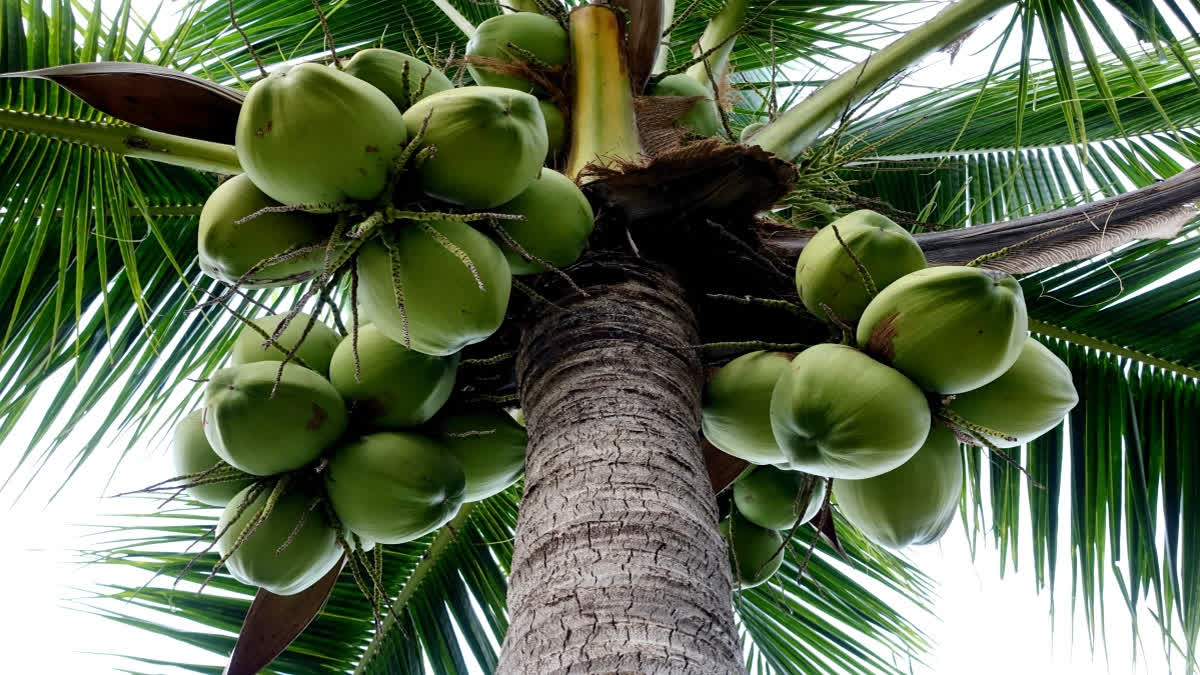New Delhi: World Coconut Day 2024 is observed on September 2 each year to make people aware of the importance of coconuts in poverty reduction and their vital role in various industries.
Significance of World Coconut Day
World Coconut Day holds significant importance as it raises awareness about the versatile coconut's role in sustainable agriculture, livelihoods, and nutrition. It promotes research and innovation in coconut farming, encouraging economic growth for farmers and coconut-based industries. Additionally, it highlights the cultural and traditional aspects of coconut use, fostering global cooperation and knowledge exchange for coconut-related challenges and opportunities.
What are the uses of coconut?
The stem and its derivatives are used to build houses and for craftwork. The coconut husk is a traditional, strong raw material used to make ropes, nets and coarse fabrics. The hard, very dense shell is a valuable craft material, for both decorative and utility items.
This can be used for construction just like regular fiber boards. Coconut boards are even being considered for use in car floorboards. When the fibers of a coconut husk are combined with a small amount of latex, it can be moulded into free-form furniture such as this chair. This is cushioned and flexible but still retains its shape.
Ground-up coconut husk is a popular hydroponic planting medium. This is especially popular with growing orchids and mushrooms. The fibers of the coconut husk can be separated and branded into a very strong rope.
The husk of coconut has long fibers that can easily be woven into ropes and nets. It can be used to cover eroding landscapes help prevent further erosion and to promote plant growth. It then biodegrades without a trace. The fibers of a coconut husk can be woven into durable rugs and mat. The course fibers are very popular for door mats.
The tough fibers of a coconut husk are great for scrubbing away dirt and grime. They make fairly decent scrubbing brushes. These are examples of a helmet and armour used in the Gilbert Islands in the 1800s. They are made from woven coconut fiber. The fibers of a coconut husk are long and tough. This makes them very useful for crafts.
Coconut shells are some of the best materials for making activated carbon for filters.
Types of Coconuts in Worldwide
There are over 150 species of coconuts that can be found in 80 different countries throughout the world. Coconuts are very buoyant and highly water-resistant, allowing them to float for very long distances across the ocean and establish roots again after they are washed ashore.
Malayan Yellow Dwarf Coconuts, Fiji Dwarf, Golden Malay, King Coconut, West Coast Tall Coconut, Macapuno Coconut, Panama Tall, Maypan Coconut
VHC1 Coconut, East Coast Tall, Dwarf Orange and Green Dwarf
Interesting Facts about Coconut
The name coconut is a combination of nut, and the Portuguese word coco, after the face-like image the shell has with the three holes.
Scientists also found that coconut extracts, particularly from the husk, showed antimicrobial properties and were effective against various bacteria, fungi, and viruses in lab tests.
Coconuts, in different forms, are anti-viral, anti-fungal, anti-bacterial and anti-parasitic.
A coconut tree can have up to 180 coconuts harvested during a single harvest, but it is more common to produce between 30-70 depending upon weather conditions.
The trees can be dwarf and tall. Dwarf trees are between 20 to 60 feet in height and tall trees grow to up 98 feet and a new tree takes between 5-6 years to bear fruit.
A coconut tree can live up to 100 years old but typically only produces coconuts up till around 80 years of age.
During World War 2, coconut water was said to be used to treat dehydration and as a saline solution replacement and given to people intravenously.
